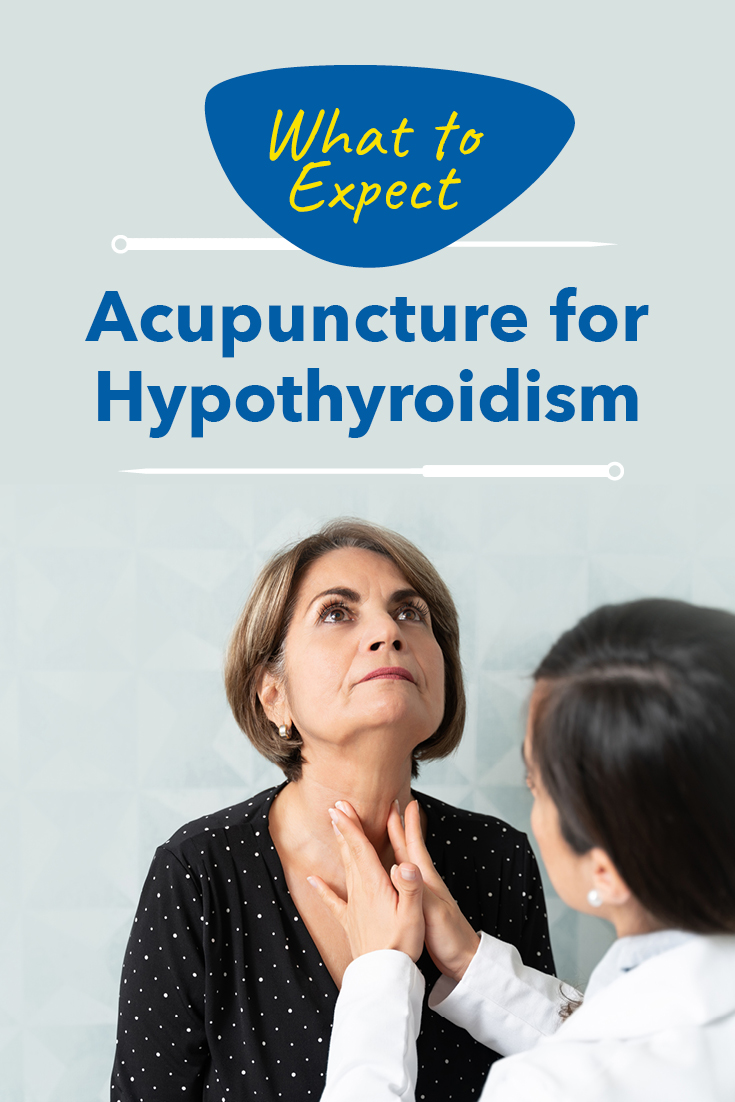Expert Advice

Acella Pharmaceuticals, LLC, is partnering with Ericca Burke, a board-certified licensed acupuncturist, to bring greater awareness to the importance of thyroid care and education. This post was sponsored by Acella Pharmaceuticals and should not be construed as medical advice. Please talk to your doctor about your individual medical situation.
Disclaimer: The information provided is for educational purposes only and does not substitute professional medical advice. Consult a medical professional or healthcare provider before beginning any exercise, fitness, diet, or nutrition routine.
When a patient receives a thyroid-related diagnosis such as hypothyroidism, they will often choose to research different treatment options. Patients exploring Chinese medicine and acupuncture will learn that a Chinese medicine diagnosis and treatment is tailored to the individual. The Chinese medicine diagnosis will focus on the energetic imbalance that the practitioner identifies in the patient; for example, a “kidney yang qi deficiency.” The energetic imbalance is what underlies the presentation of symptoms such as hypothyroidism. The Chinese medicine practitioner works to balance the patient’s energy, which allows the body to heal itself and, in this case, the thyroid gland.
Acupuncture and Acupuncture Needles
Chinese medicine is the oldest recorded medicine and has been practiced for thousands of years in Asian countries. Chinese medicine refers to a way of looking at the body and wellness. Acupuncture is the most well-known form of Chinese medicine practiced in the United States. The practice of acupuncture involves the insertion of needles into the skin. The needles stimulate points in the body where “qi,” or energy, gathers. This directs and balances energy flow.
Acupuncture needles used in the United States are sterile, used once, and discarded in a medical sharps container. The needles are very small and are about the width of a human hair. Experiments have shown that up to 40 acupuncture needles can fit inside one standard hypodermic needle.
Moxibustion
Moxibustion is another Chinese medicine modality. Moxibustion refers to the process of burning “moxa” close to the skin. The term “moxa” refers to the dried herb Artemisia vulgaris, which is also known as mugwort. Moxa is typically pressed and wrapped into cylinders. It is activated by heat and held close to the skin to stimulate acupuncture points. Moxa can be a great addition when treating a patient who has hypothyroidism. If the practitioner has determined that the patient has a deficient condition, moxa can help strengthen the body’s energy to support the thyroid.
How Acupuncture Treatments Work
An acupuncture appointment starts with an interview and health history review. This gives the practitioner insight into the overall health of the major organ systems of the body. Lifestyle is also discussed, including topics such as nutrition, sleep, and mental health. If a patient has been diagnosed with hypothyroidism, the practitioner will also ask about potential symptoms such as body temperature; weight gain; weakness or fatigue; pain, hair and nail changes; memory; anxiety; and depression. The patient’s pulses and tongue are also evaluated to assess the current state of the major organs.
At this point, the patient will typically get comfortable on the treatment table while the acupuncturist determines the diagnosis and develops the treatment plan. Each patient receives a treatment tailored specifically to their needs with acupuncture points selected to balance their energy.
Specific Points Patients can Palpate on Themselves
There are hundreds of acupuncture points throughout the body. Patients can activate acupuncture points on their own bodies through acupressure. Acupressure is the application of gentle pressure to acupuncture points. To perform acupressure, the patient places one or two fingers on an acupuncture point and massages the point with downward pressure in a small circular motion. This can be done for up to one minute at a time.
The best points to palpate will vary based on the diagnosis made by a Chinese medicine practitioner. In most cases, points along the kidney energetic channel or pathway will be useful since the kidney channel is associated with the hormones as well as the thyroid in Chinese medicine. Each acupuncture point has a Chinese name and a channel and number designation, and in the United States, they are most commonly referred to by their channel and number designation. Three examples of points that support the thyroid are Taixi Kidney 3 (Ki-3), Zhaohai Kidney 6 (Ki-6), and Guanyuan Conception Vessel 6 (CV-6).
Kidney 3 is the third point on the kidney channel. This point is the source point on the kidney channel, and it can be used to tonify any issue with the kidney. Kidney 3 is located on the inside of each ankle. It is found in the depressed area halfway between the ankle bone and the Achilles tendon.
Kidney 6 or Ki-6 is the sixth point on the kidney channel. This point supports the yin nature of the kidney, which moistens and nourishes the organ. Kidney 6 is located directly below the ankle bone on the inside of the ankle. To locate this point, slide the finger down from the ankle bone toward the sole of the foot about one inch or slightly more to feel for a depression in the skin.
Conception vessel 4 or CV-4 is the fourth point on the conception vessel channel. This point tonifies and nourishes the kidneys. CV-4 is located in the center of the abdomen, about three inches below the navel.
When practicing acupressure, use the location instructions as a general guide. Every person’s body is unique, and it’s more important to feel for the depression than to make an exact measurement. If a point is tender, this typically means that the energy flow in that area can use support and is a good candidate for acupressure.

ML-0441
Note that DTE products, including NP Thyroid®, have not been reviewed by the FDA for safety or efficacy.
IMPORTANT RISK INFORMATION, INCLUDING BOXED WARNING & INDICATIONS
Important Risk Information
Drugs with thyroid hormone activity, alone or together with other therapeutic agents, have been used for the treatment of obesity. In euthyroid patients, doses within the range of daily hormonal requirements are ineffective for weight reduction. Larger doses may produce serious or even life-threatening manifestations of toxicity, particularly when given in association with sympathomimetic amines such as those used for their anorectic effects.
- NP Thyroid® is contraindicated in patients with uncorrected adrenal insufficiency, untreated thyrotoxicosis, and hypersensitivity to any component of the product.
- In the elderly and in patients with cardiovascular disease, NP Thyroid® should be used with greater caution than younger patients or those without cardiovascular disease.
- Use of NP Thyroid® in patients with diabetes mellitus or adrenal cortical insufficiency may worsen the intensity of their symptoms.
- The therapy of myxedema coma requires simultaneous administration of glucocorticoids.
- Concomitant use of NP Thyroid® with oral anticoagulants alters the sensitivity of oral anticoagulants. Prothrombin time should be closely monitored in thyroid-treated patients on oral anticoagulants.
- In infants, excessive doses of NP Thyroid® may produce craniosynostosis.
- Partial loss of hair may be experienced by children in the first few months of therapy but is usually transient.
- Adverse reactions associated with NP Thyroid® therapy are primarily those of hyperthyroidism due to therapeutic overdosage.
- Many drugs and some laboratory tests may alter the therapeutic response to NP Thyroid ®. In addition, thyroid hormones and thyroid status have varied effects on the pharmacokinetics and actions of other drugs. Administer at least 4 hours before or after drugs that are known to interfere with absorption. Evaluate the need for dose adjustments when regularly administering within one hour of certain foods that may affect absorption.
- NP Thyroid® should not be discontinued during pregnancy, and hypothyroidism diagnosed during pregnancy should be promptly treated.
Indications
NP Thyroid® (thyroid tablets, USP) is a prescription medicine that is used to treat a condition called hypothyroidism from any cause, except for cases of temporary hypothyroidism, which is usually associated with an inflammation of the thyroid (thyroiditis). It is meant to replace or supplement a hormone that is usually made by your thyroid gland.
NP Thyroid® is also used in the treatment and prevention of normal functioning thyroid goiters, such as thyroid nodules, Hashimoto’s thyroiditis, multinodular goiter, and in the management of thyroid cancer.
Revised
10/2023
You Are About To Leave This Website
By clicking continue, this link will take you to a website to which Alora Pharmaceuticals’ Policies & Terms of Use do not apply.
^Based on prescriptions filled, NP Thyroid® is the #1 Prescribed DTE in the United States. Source: IQVIA National Prescription Audit (NPA) data on file. Acella Pharmaceuticals, LLC.
